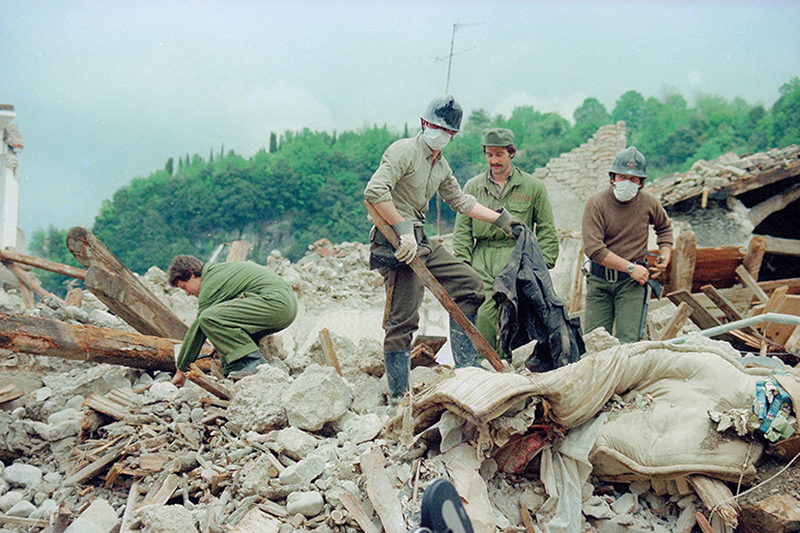The Friuli earthquake

On May 6, 1976, an earthquake of magnitude 6.4 severely hit Friuli, particularly the Tagliamento River's middle valley, affecting more than one hundred towns in the provinces of Udine and Pordenone. The earthquake was felt throughout most of central and northern Italy and was followed by several aftershocks, some of which were very powerful. On September 15, a new earthquake of magnitude 5.9 caused further destruction. The two earthquakes resulted in a total loss of 965 lives.
The earthquake caused immense damage to the region's historical buildings, and it had a significant impact on the economy. Approximately 15,000 workers lost their jobs due to factory destruction or damage. Although the high seismicity of the region and, in particular, of the area between the plains and the mountains was known, most of the municipalities that were significantly affected, such as Buia, Gemona, and Osoppo, were not classified as seismically active and were, therefore, not subject to the application of specific building regulations.
The robust military presence in Friuli enabled prompt and efficient rescue operations, making it easier to clear the debris, restart services, and establish temporary shelters and field kitchens. Soon after the earthquake, the government tasked Giuseppe Zamberletti, an extraordinary commissioner, with leading the rescue operations. He was appointed Minister for the Coordination of Civil Protection six years later.
The regional government and the mayors of the affected municipalities worked closely with the extraordinary commissioner to manage the emergency situation. The regional and local governments played an important and complex role that had previously been managed mainly at the central level. For the first time, "operational centers" were established to coordinate rescue and assistance to the population. These centers aimed to create a managing body, led by the mayor, composed of representatives of public and private administrations in each municipality in the affected area.
Mayors and citizens played a vital role in the reconstruction phase of Friuli's urban and social structure, according to what is now known as the "Friuli model." This model states that houses and factories must be rebuilt "where they were, as they were." In just over 15 years, Friuli was reborn.
Photo: Rescue teams at work following the May 6, 1976 earthquake in Friuli, Italy / The National Fire and Rescue Service